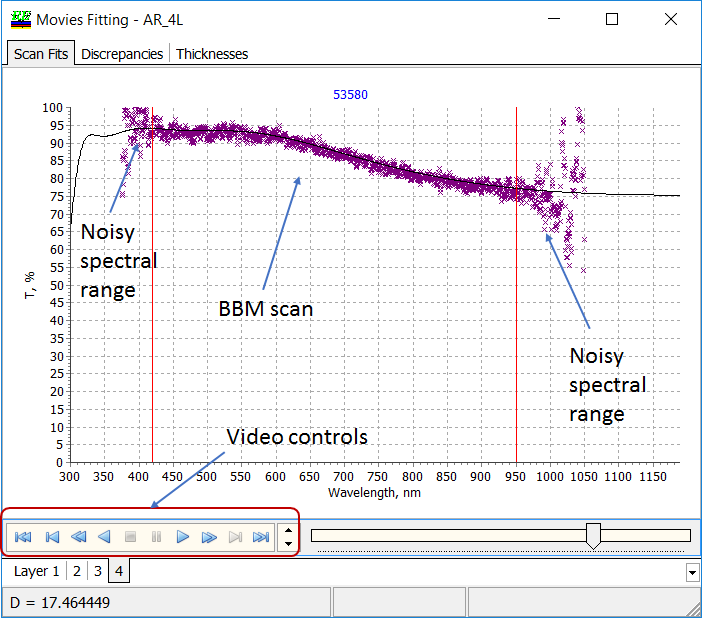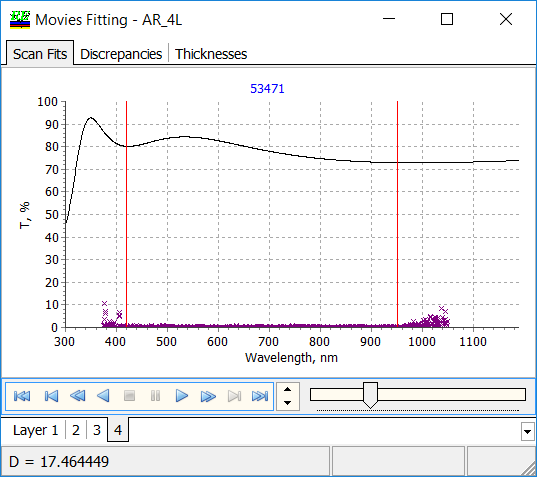 |
Challenges of in-situ measurements:
High accuracy of in-situ measurement data is a crucial issue for the reliability of on-line characterization and success of on-line re-optimization. Because all spectral photometric devices exhibit calibration drifts in time, all possible precautions must be done in order to avoid or at least minimize such drifts of measurement data. It is advisable to make an instrument calibration just before each new measurement scan.
|
|
During the deposition of multilayer coatings with broadband monitoring control it is often possible to save spectra at each rotation of the calotte. Typically measured spectra are saved in two-column format (X/Y files). Using OptiRE Import BBM Movie option you can import the whole set of X/Y files related to a deposition run with BBM monitoring. Movies can be stored in BBM Movies database. Preview tab plots imported data (see right panel). Red vertical lines show the wavelength range (Min Wavelength and Max Wavelength values). It is possible to drag these lines with mouse and to interactively change the wavelength range. |
 |
Signal drops can be excluded from the measurement data set.  |
Spectral region of supplied measurement data should be limited to the region with the most reliable transmittance/reflectance data. Due to high computational efficiency of OptiReOpt DLL there are no special requirements on limiting the total number of data points supplied for the characterization analysis. At the same time 1-2 nm step of spectral measurements in visible range is usually quite sufficient for providing enough detailed input spectral information. There are practical situations in which some measurement drifts are inevitable in spite of all possible precautions. In such situations OptiReOpt can apply internal algorithms for automatic compensation of systematic errors in measurement data sets. OptiReOpt distinguishes between two types of such errors: shift of a data set as a whole for some value (the corresponding compensation procedure is referred to as data shift correction) and errors connected with the inaccuracy of scale calibration (compensation by scale adjustment). |
|
References:
|
|
Look our video examples at YouTube
OptiLayer videos are available here:
Overview of Design/Analysis options of OptiLayer and overview of Characterization/Reverse Engineering options.
The videos were presented at the joint Agilent/OptiLayer webinar.